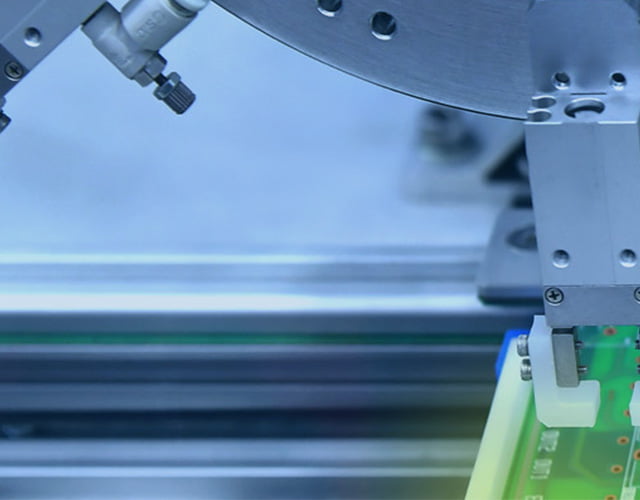Quick know what is a Bill Of Material and get the free Bill Of Materials template
What is bill of material?

A bill of materials (BOM) is a comprehensive list of raw materials, assemblies and sub-assemblies, components, and other crucial items for product manufacturing. PCBA manufacturers must depend on the information included in their BOM to run the PCB assembly, so it has to be highly accurate and sufficiently detailed. Customers use bill of materials to explain to PCB assemblers what exactly will get populated on a printed circuit board when they place an order. As a professional PCBA manufacturer, PS will get started with PCB assembly by creating a bill of materials.
A bill of materials list serves as the foundation for building the product. It's a fundamental set of data, used throughout the process. A well-constructed Bom list clearly communicates all of the technical ingredients required to build the product.
From this information, it's possible to determine:
Lead-time to procure the materials
Cost of Goods Sold (COGS)
Manufacturing processes
Quality of the Design for Assembly
Supply chain robustness
Cash flow requirements
What You Need to Know Before Making a Bom?
1.What are you building?
Before you move on to the bill of materials step, you should have at least begun the design phase of your project. If you don't, you won't know how to prepare your bill of materials list. You might start compiling information about the parts you need as you design, but you can't start creating a BOM in earnest until you have your design ready. You should have made sure your plan worked as expected and produced a Gerber file, which explains the design information for a PCB to the manufacturer. This step will help you determine what parts to include in your Bom list.
2.How will you manage your bill of materials?
As you made your BOM, it'll likely go through multiple iterations, numerous people may handle it. Before you get started, you should establish a system for managing it and ensuring the latest version is in use. Track changes and create identifiers for different versions. Allow as few people as possible to edit the document, and decide ahead of time who will be responsible for what tasks to avoid confusion.
3.Who will use it?
Because of the range of information, this document includes, it's likely multiple departments, including design, engineering, purchasing, and manufacturing, will use it during the PCB production process. Having an idea of who will need your bill of materials will help you include the correct information.
4.What information will you include?
You don't need to know the specifics at this point, but you should know what categories you want to include in your document. Every BOM should consist of some basics, such as part name and quantity, but other items are optional. You need to decide if you'll include consumables — for example, glue and bolts. Do you have a preference for suppliers to buy parts from? Keep in mind, though, the best practice is to make your BOM as detailed and complete as possible.
5.How will you organize it?
It can be helpful to decide on basic organization strategies before you begin. Consider how many levels and sub-assemblies — items you will assemble separately and then attach to the main assembly — your file will have, how you'll group items, and any special designations you plan to have. If you create your BOM list format ahead of time, you'll be able to plug data in more efficiently once you start writing your BOM.
6.What program will you use to create it?
Before you can make your bill of materials, you have to know what software you will use to create it. A BOM is essentially a spreadsheet, and many companies use Excel. As your business grows and your projects get more complicated, you may find you need a more advanced program expressly designed for BOMs, of which there are many.
What Should Get Included In A Bill Of Materials?
Bill Of Materials Level
Assign each part or assembly a number to detail where it fits in the hierarchy of the bill of materials. This allows anyone with an understanding of the bill of materials structure to quickly decipher the bill of materials.
Part Number
Assign a part number to each part or assembly in order to reference and identify parts quickly. It is common for manufacturers to choose either an intelligent or non-intelligent part numbering scheme. Whichever scheme you use, make sure you avoid creating multiple part numbers for the same part.
Part Name
Record the unique name of each part or assembly. This will help you identify parts more easily.
Phase
Record what stage each part is at in its lifecycle. For parts in production, it is common to use a term like 'In Production' to indicate the stage of the part. New parts that have not yet been approved can be classified as 'Unreleased' or 'In Design'. This is helpful during new product introduction (NPI) because it allows you to easily track progress and create realistic project timelines.
Description
Provide a detailed description of each part that will help you and others distinguish between similar parts and identify specific parts more easily.
Quantity
Record the number of parts to be used in each assembly or subassembly to help guide purchasing and manufacturing decisions and activities.
Unit of Measure
Classify the measurement in which a part will be used or purchased. It is common to use 'each', but standard measures like inches, feet, ounces, and drops are also suitable classifications. Be consistent across all similar part types because the information will help make sure the right quantities are procured and delivered to the production line.
Procurement Type
Document how each part is purchased or made (i.e. off-the-shelf or made-to-specification) to create efficiencies in manufacturing, planning, and procurement activities.
Reference Designators
Include reference designators that detail where the part fits on the board in your bill of materials. Capturing this information in the bill of materials can save time and help you avoid confusion down the road.
Bill Of Materials Notes
Capture other relevant notes to keep everyone who interacts with your bill of materials on the same page.
Documenting all this information in your BOM list will keep business activities and manufacturing tasks on target.
Electronic Part Form Factor
It's always important to fully specify the form factor, or "package type", of a component. Poorly specified or under-specified package parameters can lead to assembly errors. Beyond the basic parameters such as the EIA or JEDEC package code (0402, 0805, TSSOP, etc.), here are some other things to consider:
· For SMT packages, the height of a component can vary, particularly for packages larger than 1206, or inductors. Pay attention if the board is slotting into a tight case.
· For through-hole packages, lead pitch and component height should always be specified.
· For ICs, try to specify the common name that corresponds to the package, not just the manufacturer's internal code (for example, a TI "DW" type package code corresponds to SOIC). It's a good consistency check that can guard against errors.
7 Practical Tips for Bill Of Materials Generation (With Bill Of Materials Template Excel)
1.Tailor your bill of materials to your needs
Before you create your bill of materials list, decide what you and your partner companies need from it and design it to meet those needs. Different companies do BOMs in different ways, and different projects require different organizations, information, and other features. Customize your bill of materials according to the unique demands of your project.
2.Use a template
Each PCBA manufacturer has a bill of materials example you can obtain from their sales departments or websites before you request a quotation. Using a template from the company with which you're working helps avoid problems with accessing and opening the bill of materials document and technical issues caused by incompatible file types.
Click to download the bill of materials template.
![]() bill of materials template.xlsx
bill of materials template.xlsx
3.Include the right amount of details
Include as much helpful information as you can in your document. Remember, your bill of materials plays a crucial role in explaining your PCB assembly to people who have to build it entirely from scratch. These people may have never spoken to you in person, and they might not even speak the same language. For this reason, you need to make your bill of materials as clear, detailed, and precise as possible. Some types of information aren't helpful and will only create confusion, but use your best judgment on this. In general, the more details, the better.
4.Double-check all information
Before uploading or sending your bill of materials to a manufacturer, check it meticulously to make sure all the included information is correct and you can navigate the document the way you intended. Even relatively small mistakes can be costly when it comes to PCB assembly.
5.Keep track of changes
Ensure you have a system in place to keep track of all changes to the document. You may want to keep a record of all previous versions in case you want to refer back to them. Just make sure each version is clearly labeled and that the most up-to-date one is always the one in use for the project.
6.Limit editing capabilities
Although a lot of people might need access to your bill of materials, don't give them editing permission unless necessary. Instead, give them read-only access to the document. Restricting editing ability can prevent accidental and misinformed changes. Also, consider creating a unique identifier for everyone with editing capabilities, so you know to whom they should direct questions about the information in the bill of materials.
7.Consider automation
Consider introducing aspects of automation to your bill of materials management. Doing so can help you identify discrepancies among records and allow for enhanced traceability. It can also make it easier to import and export information for various file formats. Automation features are more prevalent with dedicated BOM systems and may require the purchase of additional software.






